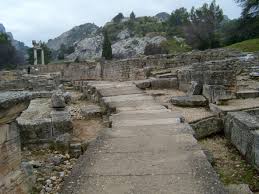The ancient Roman roads were built for continuous transport of vehicles, cattle or any other means of traffic along a path. The development of roads served as a landmark in the history of ancient Rome. The roads of ancient Rome enabled incessant movement of the armies and enhanced communication in those times.

Roman Road system
The ancient Roman road system spanned over more than 400,000km of roads, which included over 80,500km of paved roads. At one point in time in the ancient Roman history, the entire Roman Empire was divided into 113 provinces traversed by 372 road links.

The ancient Romans had gradually become very adept and skilled in making and paving roads. They called these roads viae. An interesting fact to mention is that the ancient Romans were governed by the laws of the Twelve Tables, which stated that the minimum width of a via should be 2.4m where it was straight, and 4.9m where it was turned.
Ancient Roman Roads facts
The ancient Roman road network enabled the stability of the ancient Roman Empire as well as aided its expansion.

According to scholars and historians, the ancient Rome roads were classified into three types, namely,
- Viae Publicae, Consulares, Praetoriae or Military
- Viae Private, Rusticae, Glareae or Agrarian
- Viae Vicinales
1. Viae Publicae, Consulares, Praetoriae and Military included public main roads, constructed at the expense of the public. Such roads led either to the sea, or to a public river, or to a town, or to some other public road.
They were placed under the supervision of the curators (commissioners) and were repaired by Redemptoris, who were the contractors, at the expense of the Roman populace. These ancient Roman roads bore the names of their respective constructors (e.g. Via Appia, Cassia, Flaminia).
2. Viae Private, Rusticae, Glareae or Agrarian was the second category of roads and included private or country roads. These were originally constructed by private individuals in whom their land was vested. Under the heading of viae private were also included roads which led to particular estates or settlements.
The main roads were connected to secondary roads called viae Rusticae. Secondary roads were either paved or unpaved, with a graveled surface. Beyond the secondary roads were other small roads which were not paved at all. These were referred to as the viae Terrence or dirt roads.
3. Viae Vicinales was the last category comprised ancient Roman roads in villages, or leading through or towards a village (vicus). They were considered public or private depending upon the funds from which they were constructed, that is, private or public. The repairing authorities were the magistrates of the cantons (Magistri Pagorum.



